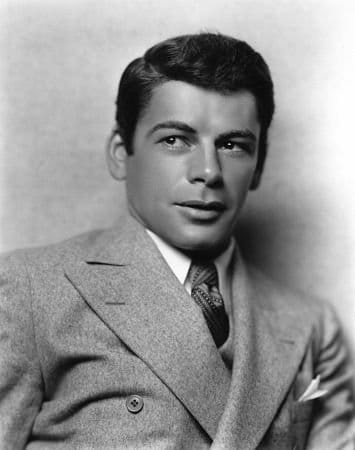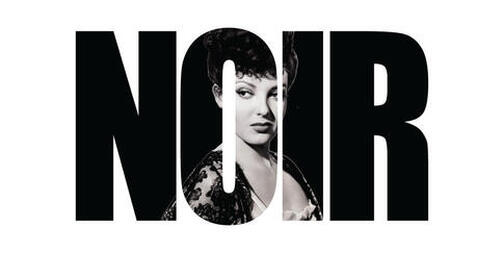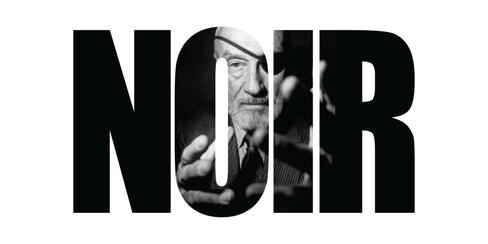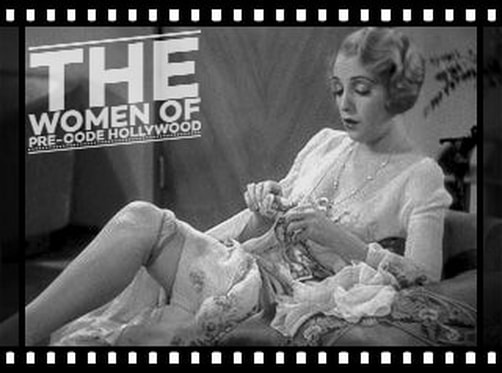PAUL MUNI
AND FILM NOIR
While Paul Muni is not typically associated with the genre of film noir, his impact on film and acting in general cannot be overlooked. Film noir emerged as a distinct genre in American cinema in the 1940s and 1950s, characterized by its dark and moody visual style, morally ambiguous characters, and complex narratives. Although Muni's career largely predates the heyday of film noir, his contributions to acting and his ability to portray intense and morally conflicted characters certainly influenced subsequent actors who would go on to excel in the film noir genre.
Muni's commitment to authenticity and his transformative performances laid the groundwork for the type of method acting that would become prevalent in film noir. His ability to disappear into his roles, immersing himself in the characters he portrayed, set a high standard for actors to follow. Muni's emphasis on psychological depth and emotional intensity in his performances resonated with audiences and influenced subsequent actors who sought to bring similar qualities to their characters in film noir.
Furthermore, Muni's portrayal of morally ambiguous characters in films like "Scarface" (1932) demonstrated the complexity and ambiguity that would become a hallmark of film noir. These types of characters, with their shades of gray and internal conflicts, became central figures in film noir narratives. Muni's ability to navigate the moral ambiguity of his characters and portray their internal struggles would have an impact on the portrayal of flawed protagonists in later film noir works.
While Paul Muni's direct involvement in film noir may be limited, his contributions to acting and his influence on subsequent actors undoubtedly left an imprint on the genre. His commitment to authenticity, his transformative performances, and his portrayal of morally conflicted characters set a precedent for the type of acting that would become synonymous with film noir.
Muni's commitment to authenticity and his transformative performances laid the groundwork for the type of method acting that would become prevalent in film noir. His ability to disappear into his roles, immersing himself in the characters he portrayed, set a high standard for actors to follow. Muni's emphasis on psychological depth and emotional intensity in his performances resonated with audiences and influenced subsequent actors who sought to bring similar qualities to their characters in film noir.
Furthermore, Muni's portrayal of morally ambiguous characters in films like "Scarface" (1932) demonstrated the complexity and ambiguity that would become a hallmark of film noir. These types of characters, with their shades of gray and internal conflicts, became central figures in film noir narratives. Muni's ability to navigate the moral ambiguity of his characters and portray their internal struggles would have an impact on the portrayal of flawed protagonists in later film noir works.
While Paul Muni's direct involvement in film noir may be limited, his contributions to acting and his influence on subsequent actors undoubtedly left an imprint on the genre. His commitment to authenticity, his transformative performances, and his portrayal of morally conflicted characters set a precedent for the type of acting that would become synonymous with film noir.
VIDEO TRIBUTE
Paul Muni

Paul Muni was an American stage and film actor, born on September 22, 1895, in Lemberg, Austria-Hungary (now Lviv, Ukraine). He is considered one of the most accomplished actors of his time, known for his intense and versatile performances. Muni's birth name was Frederich Meshilem Meier Weisenfreund, and he later changed it to Paul Muni after immigrating to the United States.
Muni grew up in a Yiddish-speaking family in the East Side of New York City. He developed an interest in acting at an early age and began performing in Yiddish theater productions. In 1926, he made his Broadway debut in the play "We Americans." His breakthrough performance came in 1929 when he starred in the play "Counsellor-at-Law," which earned him critical acclaim and established him as a leading stage actor.
In 1931, Muni made his film debut in the crime drama "The Valiant," for which he received an Academy Award nomination for Best Actor. He quickly gained a reputation for his transformative performances, often portraying real-life figures. One of his most notable roles was in the 1932 film "Scarface," where he played a ruthless gangster modeled after Al Capone.
Muni's portrayal of Louis Pasteur in the 1936 film "The Story of Louis Pasteur" earned him an Academy Award for Best Actor. He went on to receive four more Academy Award nominations throughout his career. Some of his other notable film roles include Tony Camonte in "Scarface" (1932), Émile Zola in "The Life of Emile Zola" (1937), and Henry Drummond in "Inherit the Wind" (1960).
Known for his dedication to his craft, Muni was known to extensively research and prepare for his roles. He was a method actor before the term became widely known, immersing himself in the characters he portrayed. Muni's performances were marked by his ability to disappear into his roles and his commitment to authenticity.
Despite his success, Muni was selective about his film roles and focused primarily on quality rather than quantity. He preferred the stage and often returned to Broadway throughout his career. Muni's last film role was in the 1962 film "The Last Angry Man," for which he received his final Academy Award nomination.
Paul Muni passed away on August 25, 1967, at the age of 71. His contributions to both stage and screen continue to be remembered and appreciated, and he is regarded as one of the finest actors of his generation.
Muni grew up in a Yiddish-speaking family in the East Side of New York City. He developed an interest in acting at an early age and began performing in Yiddish theater productions. In 1926, he made his Broadway debut in the play "We Americans." His breakthrough performance came in 1929 when he starred in the play "Counsellor-at-Law," which earned him critical acclaim and established him as a leading stage actor.
In 1931, Muni made his film debut in the crime drama "The Valiant," for which he received an Academy Award nomination for Best Actor. He quickly gained a reputation for his transformative performances, often portraying real-life figures. One of his most notable roles was in the 1932 film "Scarface," where he played a ruthless gangster modeled after Al Capone.
Muni's portrayal of Louis Pasteur in the 1936 film "The Story of Louis Pasteur" earned him an Academy Award for Best Actor. He went on to receive four more Academy Award nominations throughout his career. Some of his other notable film roles include Tony Camonte in "Scarface" (1932), Émile Zola in "The Life of Emile Zola" (1937), and Henry Drummond in "Inherit the Wind" (1960).
Known for his dedication to his craft, Muni was known to extensively research and prepare for his roles. He was a method actor before the term became widely known, immersing himself in the characters he portrayed. Muni's performances were marked by his ability to disappear into his roles and his commitment to authenticity.
Despite his success, Muni was selective about his film roles and focused primarily on quality rather than quantity. He preferred the stage and often returned to Broadway throughout his career. Muni's last film role was in the 1962 film "The Last Angry Man," for which he received his final Academy Award nomination.
Paul Muni passed away on August 25, 1967, at the age of 71. His contributions to both stage and screen continue to be remembered and appreciated, and he is regarded as one of the finest actors of his generation.
Quotes:
"I don't want to be a star. If you have to label me anything, I'm an actor - I guess. A journeyman actor. I think "star" is what you call actors who can't act."
"I've never tried to learn the art of acting. I have been in the business for years but I still can't tell what acting is or how it's done."
[to Irving Thalberg, on the MGM producer's desire to cast him as Wang Lung in The Good Earth (1937)] "I'm about as Chinese as Herbert Hoover."
[on Robert Donat's performance in Goodbye, Mr. Chips (1939)] "The most magnificent performance I've ever seen on any screen. Not a false motion - not a wasted gesture. He is the greatest actor we have today."
- Paul Muni
Trivia:
He and James Dean are the only actors to receive an Academy Award nomination for both their first and last screen appearance.
He once told Clifford Odets about how he gave up boxing because it endangered his secondary career as a violinist. This inspired Odets to write "Golden Boy" (its film adaptation Golden Boy (1939) was directed by Rouben Mamoulian).
During his live TV appearance in the Playhouse 90 (1956) episode The Last Clear Chance (1958) , he appeared to be wearing a hearing aid. He wasn't. Due to his age, and given the state of his health, it was no longer possible for him to memorize long stretches of dialogue at short notice. What he was wearing was a small radio transmitter, through which he was fed his lines just prior to speaking them.
Had a fondness for playing historical characters and appearing in heavy disguise. Co-star Bette Davis wrote in her autobiography : "There is no question that his technique as an actor was superb...(but) Mr. Muni seemed intent on submerging himself so completely that he disappeared".
Turned down the role of Roy Earle in High Sierra (1941), which was eventually given to Humphrey Bogart.
He once told Clifford Odets about how he gave up boxing because it endangered his secondary career as a violinist. This inspired Odets to write "Golden Boy" (its film adaptation Golden Boy (1939) was directed by Rouben Mamoulian).
During his live TV appearance in the Playhouse 90 (1956) episode The Last Clear Chance (1958) , he appeared to be wearing a hearing aid. He wasn't. Due to his age, and given the state of his health, it was no longer possible for him to memorize long stretches of dialogue at short notice. What he was wearing was a small radio transmitter, through which he was fed his lines just prior to speaking them.
Had a fondness for playing historical characters and appearing in heavy disguise. Co-star Bette Davis wrote in her autobiography : "There is no question that his technique as an actor was superb...(but) Mr. Muni seemed intent on submerging himself so completely that he disappeared".
Turned down the role of Roy Earle in High Sierra (1941), which was eventually given to Humphrey Bogart.




